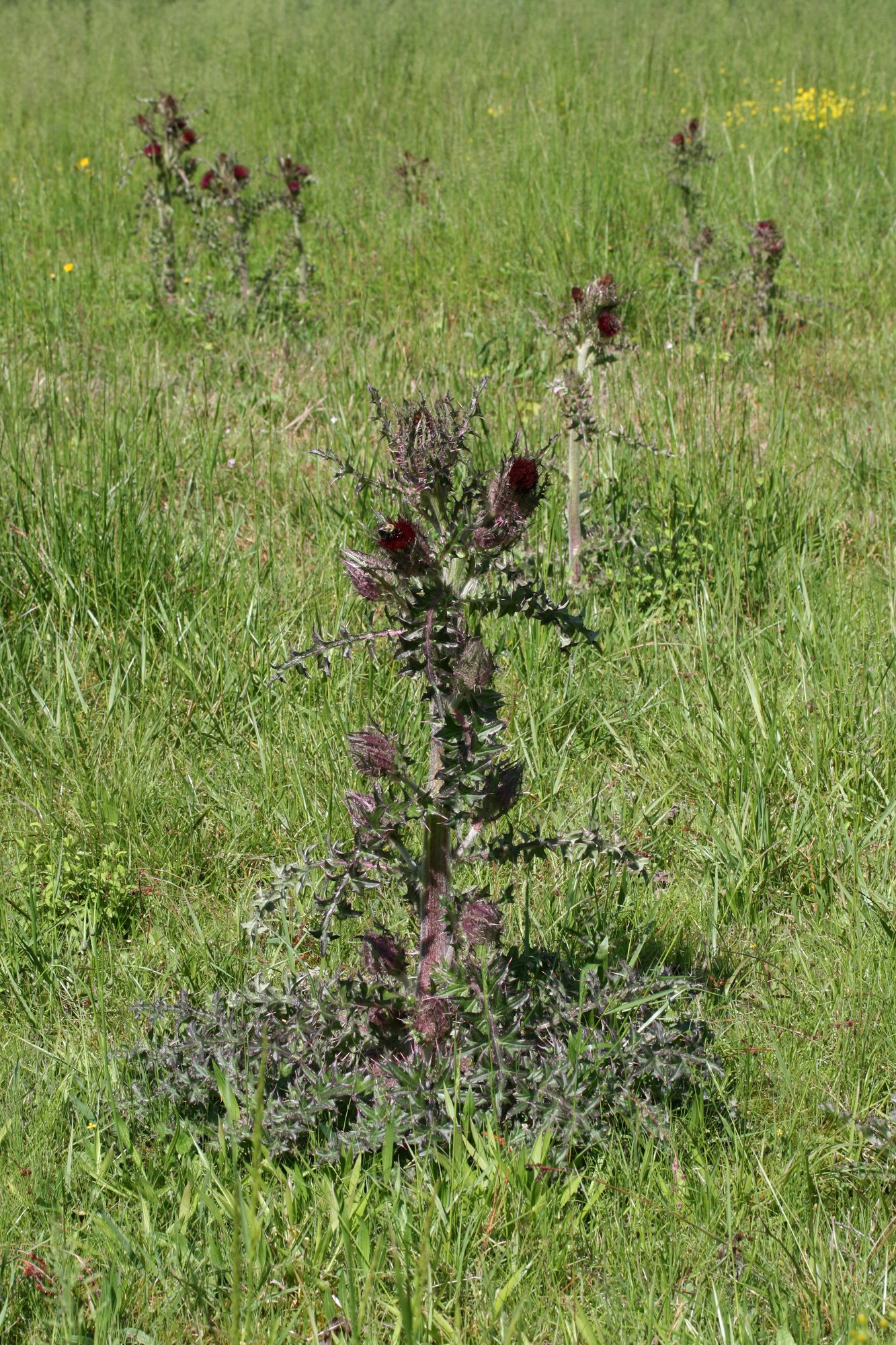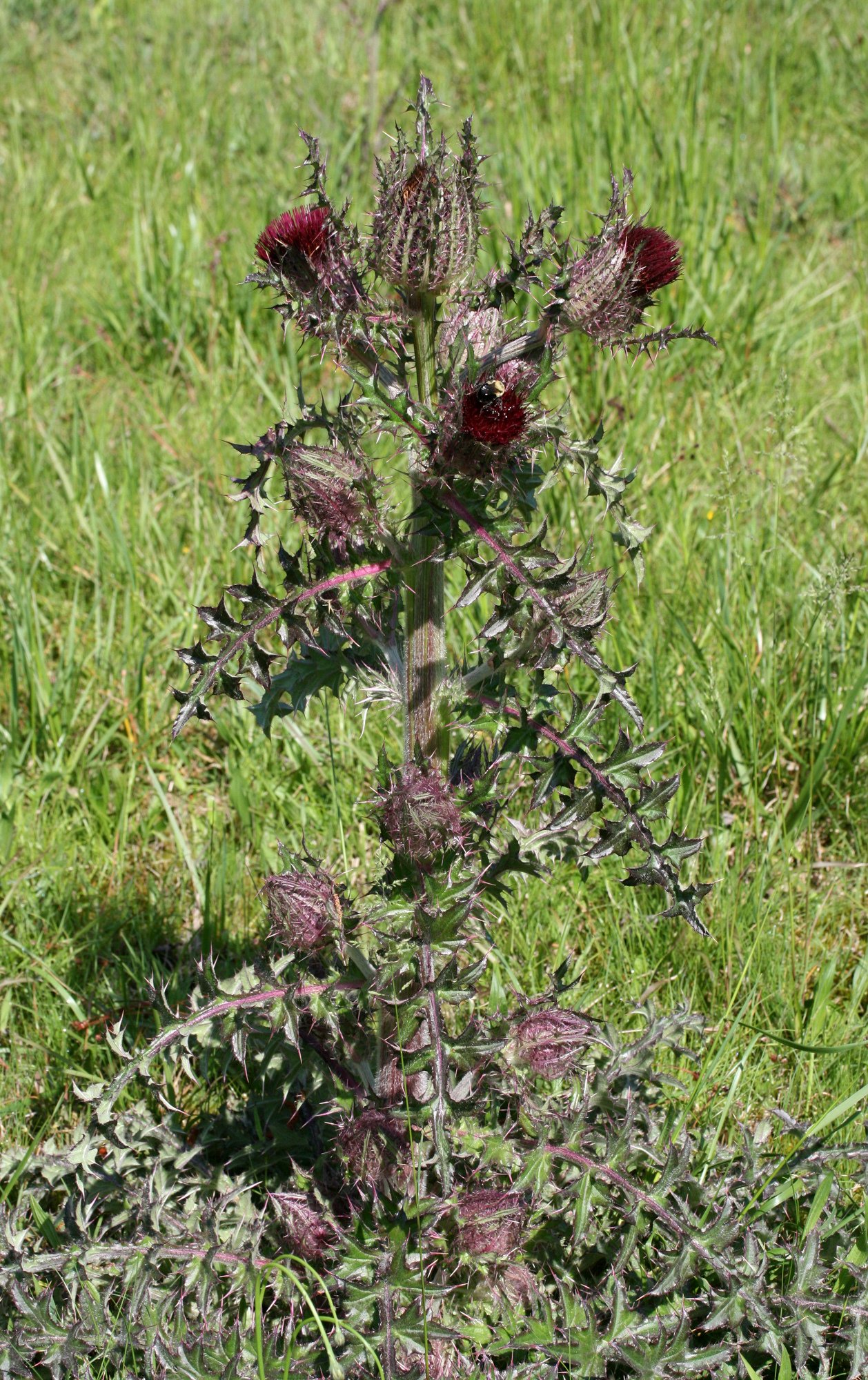Cirsium horridulum, also known as The Horrid Thistle, is an undervalued and often maligned plant which is native to the Eastern United States. It can be found in salt marsh edges along coastlines, but it also grows and spreads quite readily in sunny meadows and lawns—reaching heights of up to five feet (152 cm) tall with basal leaves of around one foot (30 cm) in diameter. As a result of its success in fields and lawns, it has frequently been labeled a "pasture weed" in parts of the US. Its flowers come in a variety of colors, including white, red, pink, yellow, and purple, and it is armed on most surfaces (from flower bracts to leaves to stem) with defensive spines which effectively ward off most mammalian herbivory.
While its populations are secure in much of the Southeast, The Horrid Thistle faces a number of threats. It is listed as endangered in Connecticut, Pennsylvania, and New Hampshire—and is considered threatened in Rhode Island. Its disappearance in these locations is thought to be caused by a combination of both habitat loss and the introduction of the nonindigenous Thistlehead Weevil, Rhinocyllus conicus—first introduced to the East Coast US in the 1990s in order to control several introduced, invasive thistles.
Despite its somewhat unsettling appearance, pain-inducing prickliness, and eagerness to spread through fields and salt marshes, the good that this species can do for our indigenous ecosystems is palpable. Its outward disposition belies its true nature, and if we just take the time to look a little deeper there is so much to learn! Not only is The Horrid Thistle a host plant to multiple species of insects (which include the likes of the Painted Lady Butterfly and the Little Metalmark Butterfly), but it also rewards a plethora of pollinators with high value nectar, provides songbirds with nutrient-rich seeds, and supplies crucial nesting material for native bees. Its gifts to wildlife are truly bountiful, making it a perfect plant for those hoping to start a pollinator garden (in these locations)!



To be honest, I’ve struggled a lot over the past week to put together a blog which would capture both the beauty of this plant and the strange sort of kinship I feel for it. There is a wave of deference that washes over me whenever I’m in the presence of this plant, and I can’t quite explain it. It has a refreshing forthrightness with which it asserts itself, sternly asking us to be mindful of boundaries—while at the same time asking us to challenge our pre-existing beliefs and reserve our judgments for when we have a broader (and clearer) perspective.
I’ve always had a penchant for outsiders (like The Horrid Thistle), finding myself sympathizing with fictional antiheroes—with their complicated backstories and unexplored gray areas—being utterly frustrated at society’s polarized views and its unwillingness to delve any deeper than surface labels like “good” and “bad”. The fact of the matter is that our superficial gazes often fail to ascertain the inherent value in wildlife (and in humans for that matter), and as a result we deprive ourselves of so many opportunities for joy.








